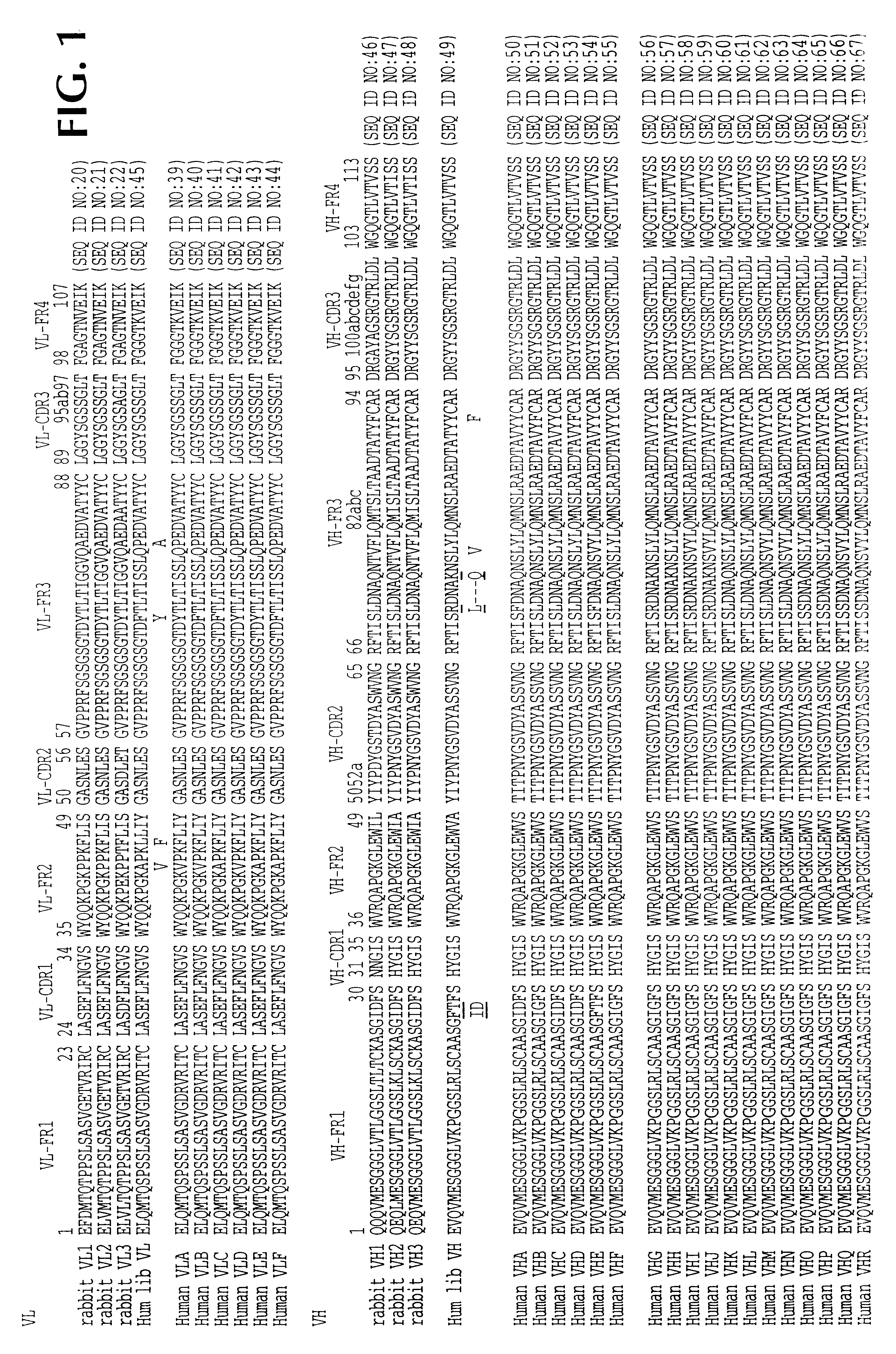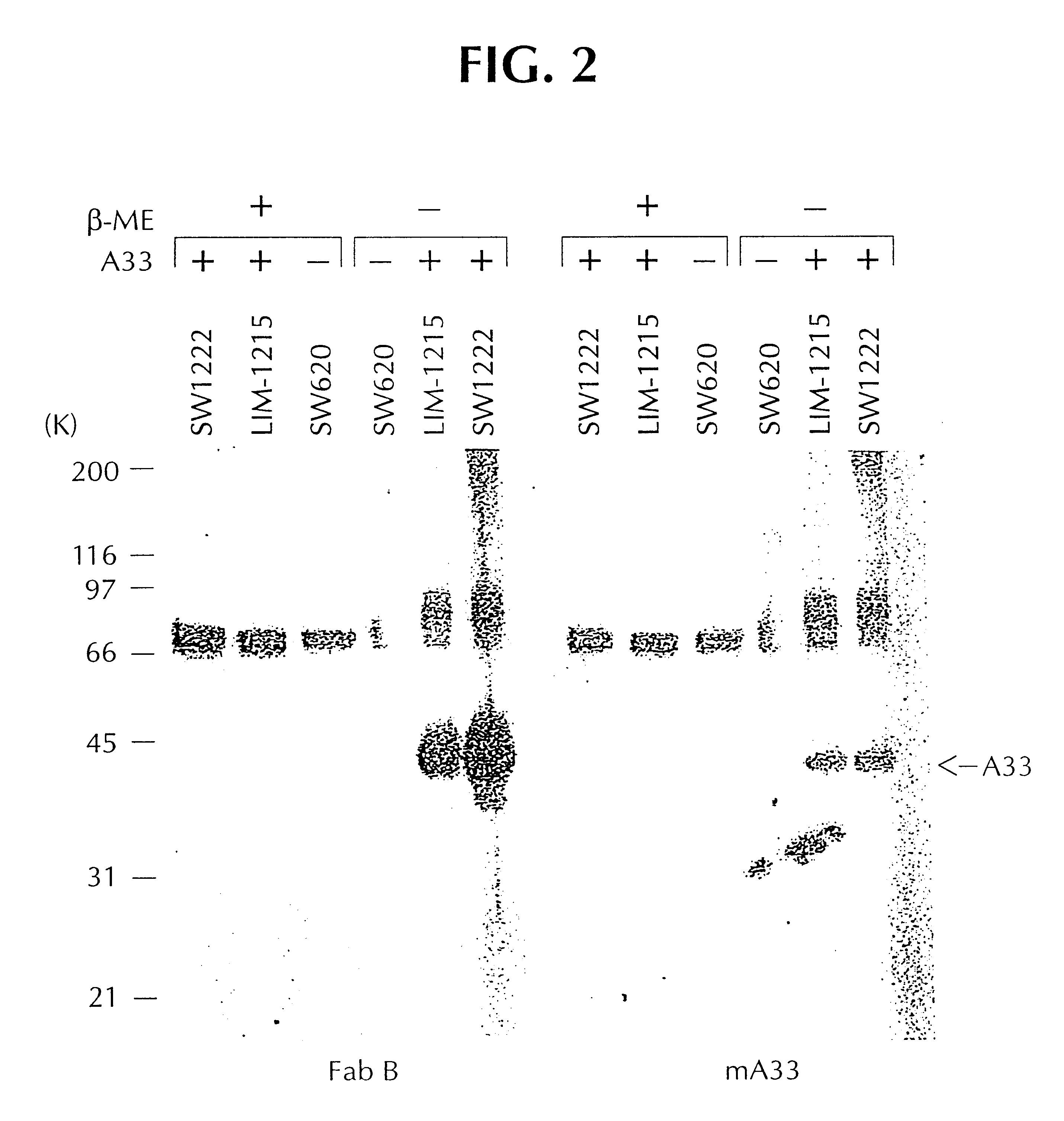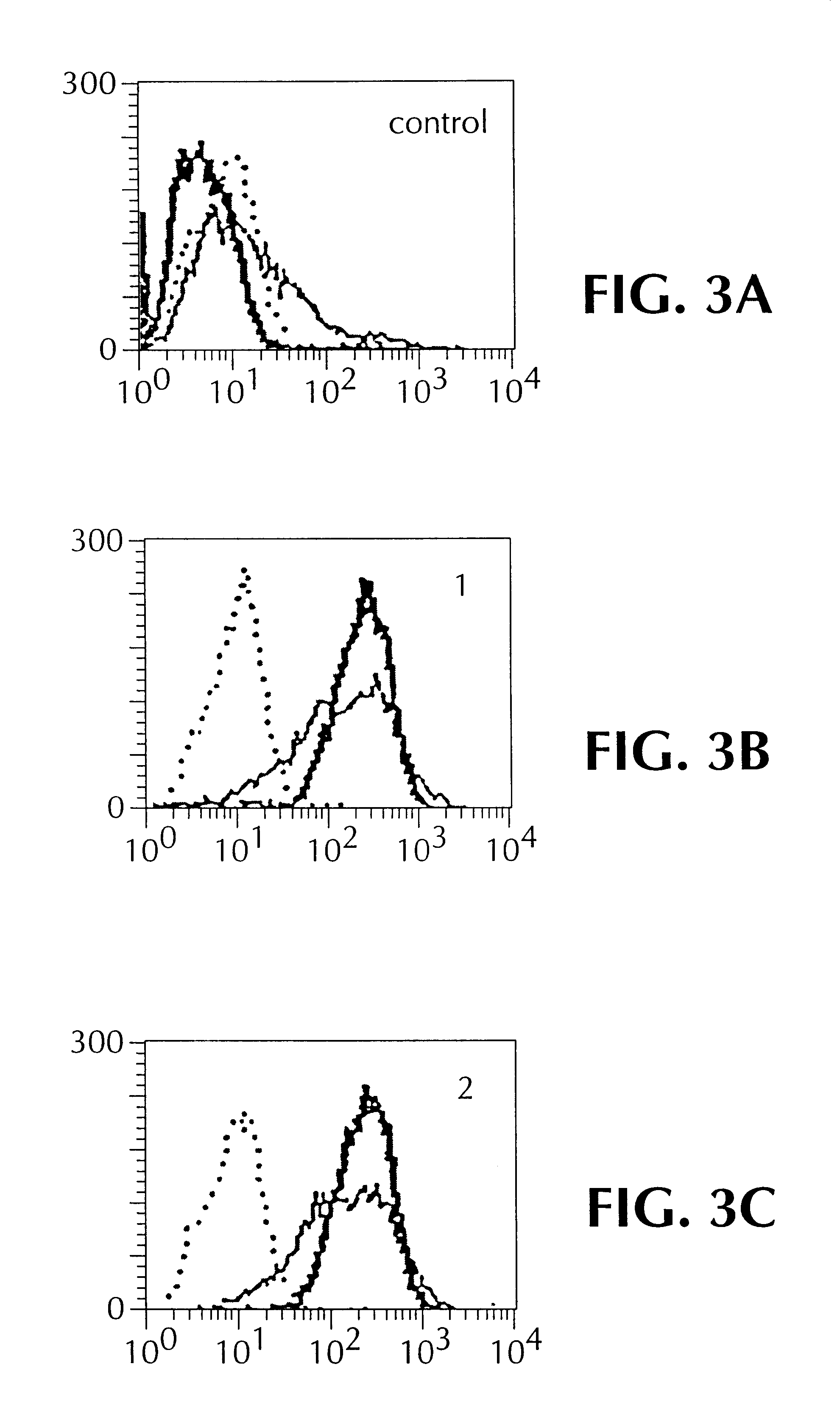A33 antigen specific immunoglobulin products and uses thereof
a technology of immunoglobulin and antigen, which is applied in the field of a33 antigen specific immunoglobulin products, can solve the problems of curtailing the use of murine antibodies in vivo, and the substitution of murine cdrs for human cdrs is not generally sufficient to generate humanized antibodies
- Summary
- Abstract
- Description
- Claims
- Application Information
AI Technical Summary
Problems solved by technology
Method used
Image
Examples
example 2
Amplification of Variable Region Sequences and Generation of Chimeric Antibodies
Five days after the last of the six immunizations referred to supra, spleen and bone marrow cells from one leg were harvested from each animal. Total RNA was extracted from the cells, using standard methodologies. First strand cDNA was then synthesized from the RNA, using standard techniques. The cDNA was then amplified via PCR (35 cycles). Various primers were used, i.e.:
V.sub.K 5' sense primers:
1. 5'-gggcccaggcggccgagctcgtgmtgacccagactcca-3' (SEQ ID NO:1)
2. 5'-gggcccaggcggccgagctcgatmtgacccagactcca-3' (SEQ ID NO:2)
3. 5'-gggcccaggcggccgagctcgtgatgacccagactgaa-3' (SEQ ID NO:3)
V.sub..kappa. 3' antisense primers:
1. 5'-acagatggtgcagccacagttaggatctccagctcggtccc-3' (SEQ ID NO:4)
2. 5'-gacagatggtgcagccacagttttgatttccacattggtgcc-3' (SEQ ID NO:5)
3. 5'-gacagatggtgcagccacagttttgacsaccacctcggtccc-3' (SEQ ID NO:6)
V.sub..lambda. 5' sense primer:
5'-gggcccaggcggccgagctcgtgctgactcagtcgccctc-3' (SEQ ID NO:7)
V.sub..lambda....
example 3
Screening the Chimera Antibody
The phage library prepared in example 2, supra, was then panned against recombinant human A33 antigen using 200 ng of protein in 25 .mu.l of TBS for coating on 1 well of a 96 well plate, 0.05% (v / v) Tween 20 in TBS for washing, and 10 mg / ml of trypsin in TBS for elution. Trypsinization was carried out for 30 minutes at 37.degree. C. The number of washing steps increased from 5 (first round) to 10 (second round), to 15 in the third and fourth rounds.
Output phage pool of each round was monitored, via phage ELISA, using horseradish peroxidase labelled sheep anti-M13 phage polyclonal antibodies. Increased signal above background from round to round was observed, and output numbers increased strongly after the third and fourth rounds, indicating successful selection.
Forty clones from final output were grown and induced with 1 mM IPTG. Supernatants from the clones were tested for binding to immobilized, recombinant human A33 via ELISA, using alkaline phosphat...
example 4
Characterization of the Expressed Fabs
Soluble Fabs from rabbit VH1, VL1 and rabbit VH2 and VL2 were produced from E. coli, in accordance with Rader, et al., supra. Fab molecules were purified from concentrated supernatants and from sonicated lysates of overnight cultures that had been induced with 1 mM IPTG, followed by affinity chromatography, using PBS as equilibriation and washing buffer, and U.5M acetic acid for elution. The eluted fractions were neutralized immediately using U.5 volumes 1M Tris-HCl, pH 9.0, followed by pooling. The materials were concentrated, and combined with PBS. Quality was analyzed via SDS-PAGE and Coomassie Blue staining, using standard methods. They were then subjected to flow cytometry, using FACS scan. For each determination, 1.times.10.sup.4 cells were analyzed. Indirect immunofluorescence staining was carried out using 2 mg / ml of Fab, in 1% w / v BSA, 25 mM Hepes, 0.05% (w / v) sodium azide in PBS. Dilutions (1:100) of FITC conjugated donkey anti-human F...
PUM
| Property | Measurement | Unit |
|---|---|---|
| pH | aaaaa | aaaaa |
| pH | aaaaa | aaaaa |
| pH | aaaaa | aaaaa |
Abstract
Description
Claims
Application Information
 Login to View More
Login to View More - R&D
- Intellectual Property
- Life Sciences
- Materials
- Tech Scout
- Unparalleled Data Quality
- Higher Quality Content
- 60% Fewer Hallucinations
Browse by: Latest US Patents, China's latest patents, Technical Efficacy Thesaurus, Application Domain, Technology Topic, Popular Technical Reports.
© 2025 PatSnap. All rights reserved.Legal|Privacy policy|Modern Slavery Act Transparency Statement|Sitemap|About US| Contact US: help@patsnap.com



